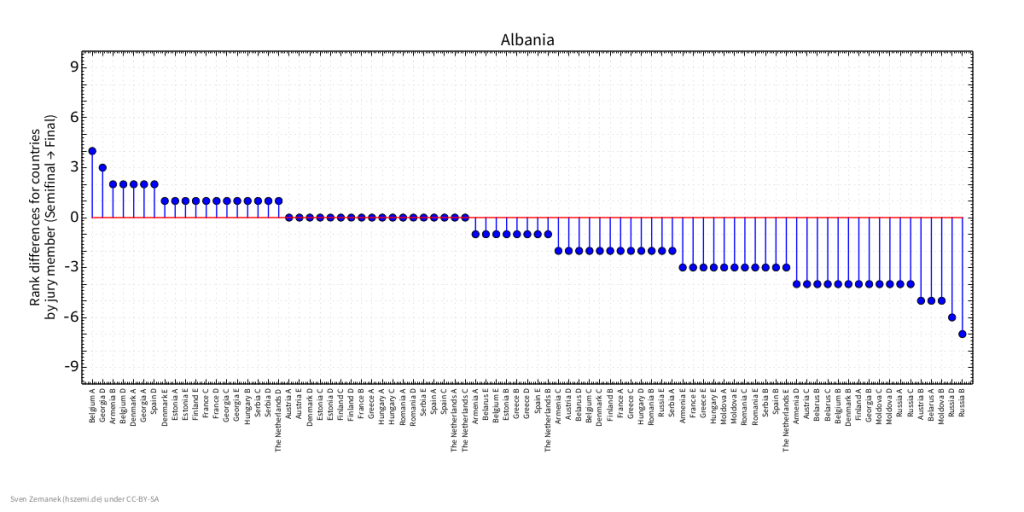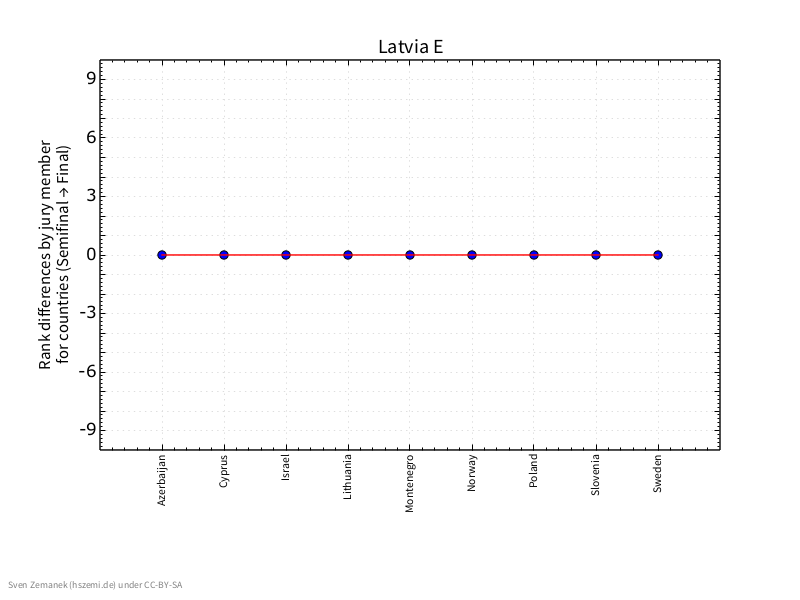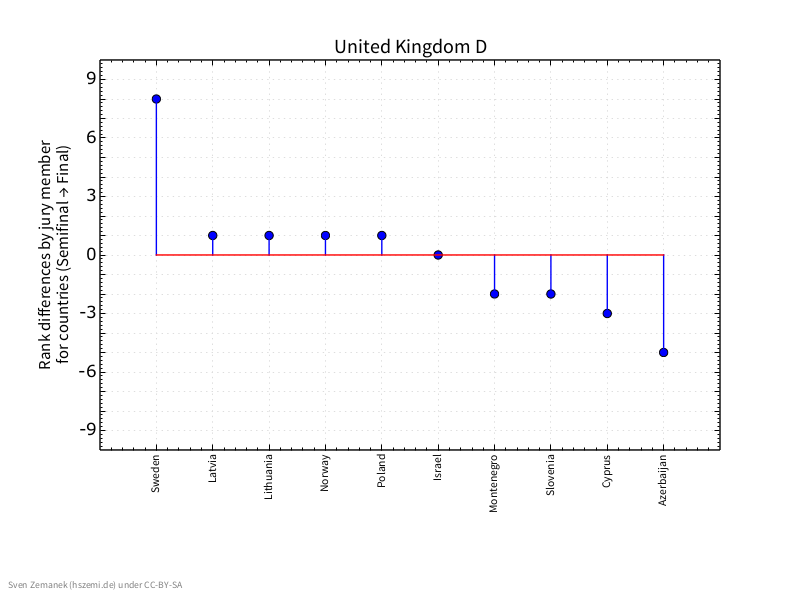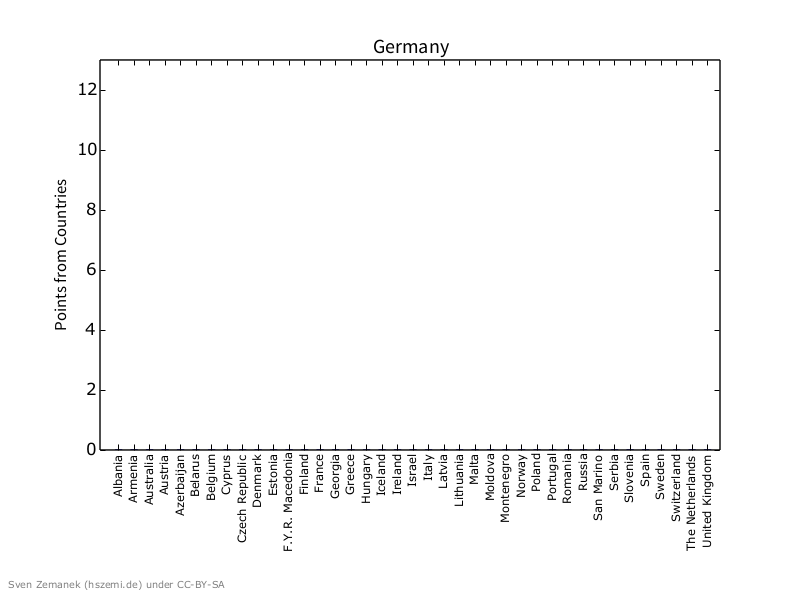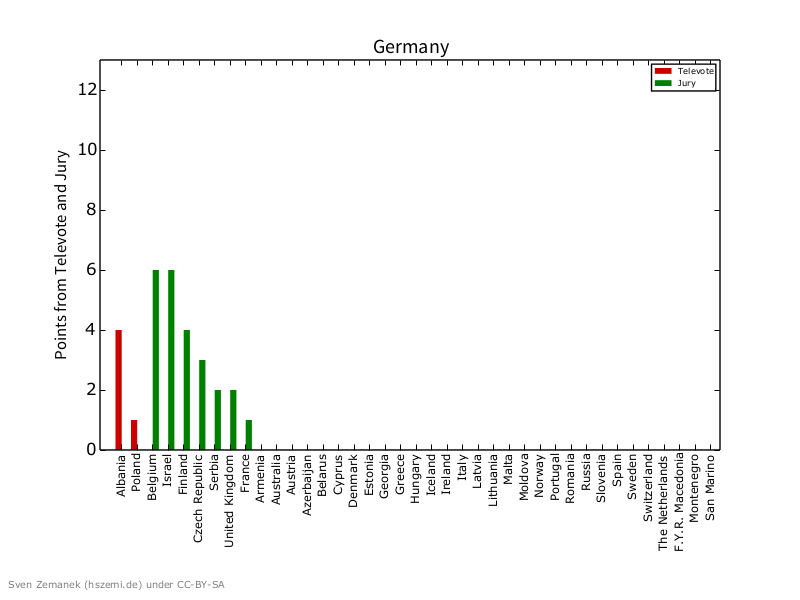It probably won’t change who wins, though.
Yesterday, a new voting scheme for the Eurovision Song Contest was announced. While in recent years, the votes of the jury and the televote have been combined into one single vote for each country, consisting of the well-known 1-8, 10 and 12 points, in 2016, each country will have two separate votes of 1-8, 10 and 12 points from the televoting and the jury. This of course doubles the total number of points that each country awards, from 58 to 116. While the changes also include a modification to the way the results are announced, we are going to ignore this for the time being, as it does not affect the end result at all.
Of course, the main question to be asked is: “Will this change who wins the contest?”
The EBU has released the split results for the ESC in 2014 and 2015, so let’s have a look at those results again and see how the new rules would have changed the outcome:
Eurovision Song Contest 2015
| # (old rule) |
Country | Jury | Televoting | Total (new rule) |
| 1 | Sweden | 353 | 272 | 625 |
| 2 | Russia | 234 | 286 | 520 |
| 3 | Italy | 171 | 356 | 527 |
| 4 | Belgium | 186 | 190 | 376 |
| 5 | Australia | 224 | 124 | 348 |
| 6 | Latvia | 249 | 88 | 337 |
| 7 | Estonia | 53 | 144 | 197 |
| 8 | Norway | 163 | 37 | 200 |
| 9 | Israel | 77 | 102 | 179 |
| 10 | Serbia | 12 | 86 | 98 |
| 11 | Georgia | 62 | 51 | 113 |
| 12 | Azerbaijan | 40 | 48 | 88 |
| 13 | Montenegro | 44 | 34 | 78 |
| 14 | Slovenia | 36 | 27 | 63 |
| 15 | Romania | 21 | 69 | 90 |
| 16 | Armenia | 15 | 77 | 92 |
| 17 | Albania | 4 | 93 | 97 |
| 18 | Lithuania | 31 | 44 | 75 |
| 19 | Greece | 29 | 24 | 53 |
| 20 | Hungary | 29 | 17 | 46 |
| 21 | Spain | 6 | 26 | 32 |
| 22 | Cyprus | 63 | 8 | 71 |
| 23 | Poland | 2 | 47 | 49 |
| 24 | United Kingdom | 12 | 4 | 16 |
| 25 | France | 24 | 3 | 27 |
| 26 | Austria | 40 | 0 | 40 |
| 27 | Germany | 24 | 5 | 29 |
Considering that Italy won the popular vote, Sweden still wins by a large margin.
The more interesting things happen at the end of the table, though. Remember Austria and Germany, who both received a total of 0 points in the grand final? Well, a lot of bad luck was needed for that result. Every time the jury of one country tried to award points to one of those songs, the televote kicked it out of the country’s top ten with a low rating, and vice versa. With the new scheme, every song receives at least a double-digit number of points. Austria and Germany suddenly overtake the UK and France, Austria even manages to get more points in total than Spain!
What becomes clear: It will be very, very hard to get 0 points. You would have to be placed outside of the top 10 by every jury as well as by every televote of every participating country. If Turkey were to compete with a really, really bad song against 42 Armenias, that might happen. But well.
Now, let’s look at 2014, the other year that we do have detailed statistics for:
Eurovision Song Contest 2014
| # (old rule) | Country | Jury | Televoting | Total (new rule) |
| 1 | Austria | 214 | 306 | 520 |
| 2 | The Netherlands | 200 | 220 | 420 |
| 3 | Sweden | 199 | 173 | 372 |
| 4 | Armenia | 113 | 187 | 300 |
| 5 | Hungary | 138 | 83 | 221 |
| 6 | Ukraine | 72 | 112 | 184 |
| 7 | Russia | 62 | 132 | 194 |
| 8 | Norway | 102 | 39 | 141 |
| 9 | Denmark | 85 | 42 | 127 |
| 10 | Spain | 83 | 29 | 112 |
| 11 | Finland | 114 | 36 | 150 |
| 12 | Romania | 51 | 103 | 154 |
| 13 | Switzerland | 26 | 114 | 140 |
| 14 | Poland | 23 | 162 | 185 |
| 15 | Iceland | 59 | 38 | 97 |
| 16 | Belarus | 50 | 56 | 106 |
| 17 | United Kingdom | 49 | 24 | 73 |
| 18 | Germany | 56 | 27 | 83 |
| 19 | Montenegro | 48 | 27 | 75 |
| 20 | Greece | 45 | 41 | 86 |
| 21 | Italy | 37 | 22 | 59 |
| 22 | Azerbaijan | 101 | 14 | 115 |
| 23 | Malta | 119 | 12 | 131 |
| 24 | San Marino | 16 | 15 | 31 |
| 25 | Slovenia | 21 | 15 | 36 |
| 26 | France | 5 | 1 | 6 |
Not surprisingly, Austria still wins by a large margin. Again, it is more interesting to look at what happens below the top 101. Just look what happens to Malta and Poland: Malta’s contribution received a lot of points from the juries, not so much from the televotes. Poland on the other hand, probably due to optical reasons, received many points from the televotes, whilst the juries did not like the performance that much. Both entries rank much higher with the new scheme (Poland +7, Malta +10).
So why do we still get the same winners? There has been an element of luck that you needed in order to receive points: Until now, a jury and an audience in the same country had to agree that your entry is worthy to receive points. It would not really help if, say, the jury from Malta put you in first place, if their televote put you last. With the new scheme, you would still get the 12 points.
Winning entries usually have high acceptance among the viewers as well as the juries. So the situation where jury rating and televote from one country differ drastically ist less likely to occur for popular entries. Thus, they increase their score by roughly 1.7, while the relative increase in score for lower-ranking entries is likely to be a lot higher, but still not enough to take the crown from the winning entry.
To summarize: The new voting scheme evens out the field a bit. Getting points is less luck-dependent. Everybody gets more points. Unless two songs’ scores are really close, the winning song in the old scheme will most likely also be the winning song in the new scheme. And getting zero points becomes very, very, very unlikely.
- Although Spain gets kicked out – sorry Ruth! ↩


